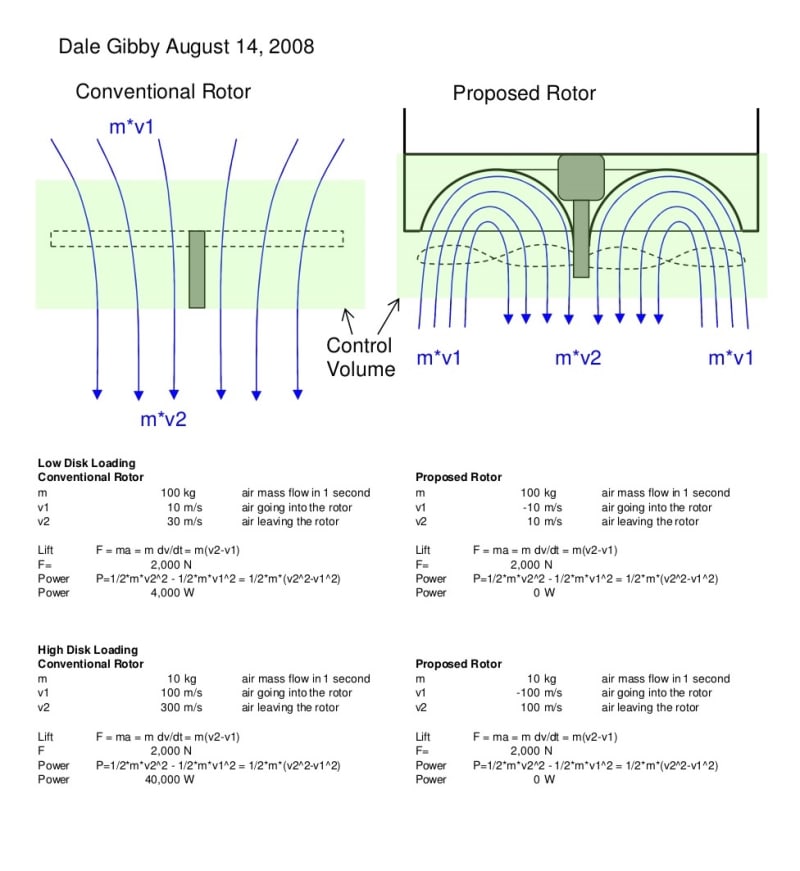This invention provides vertical lift flight at a much lower power requirement than existing rotorcraft. Existing rotorcraft generate lift by accelerating airflow through the rotor disk. The change in air speed imparts a lifting force on the aircraft through conservation of momentum.
In this device the air flow changes direction, not speed. The rotor has an optimized pitch along the blade length, such that the air is pushed down near the center of rotation, but pushed up near the end of the blade. Above the blade is a half-torus shaped cavity to direct the air flow. As the air flows against the half-torus, it is directed in a U-turn back into the rotor disk. This change of direction requires a force, and the equal-but-opposite force is the lift on the aircraft. The rotor blade shape is optimized so that the air does not change speed, only direction. Ideally, air speed should be the same entering and exiting the control volume.
Therefore, lift is achieved by changing the direction of the air flow, not the speed of the air flow. Work is a function of speed. (E=1/2 m*v^2) Since the air does not change speed, no work is required to accelerate it. If an inviscid fluid is assumed, the power needed to provide lift is zero. (See control volume calculations.) In practice, a small amount of power will be required due to air viscosity, and imperfections in design. However, this is very small compared to the work of air acceleration in conventional rotors.
For conventional rotorcraft, power required is a strong function of disk loading. A small air flow can have a large acceleration, or a large airflow can have a small acceleration. If lift is the same, then power requirement is bigger for a small air flow with a large acceleration.
However, for this rotorcraft, there is less penalty for high disk loading. (See calculations.) This fact allows the use of much smaller rotors than would be required for conventional rotorcraft.
To integrate this into a vehicle, the rotor(s) should be on the bottom of the vehicle rather than on the top.
Like this entry?
-
About the Entrant
- Name:Dale Gibby
- Type of entry:individual
- Software used for this entry:MS Excel
- Patent status:none

